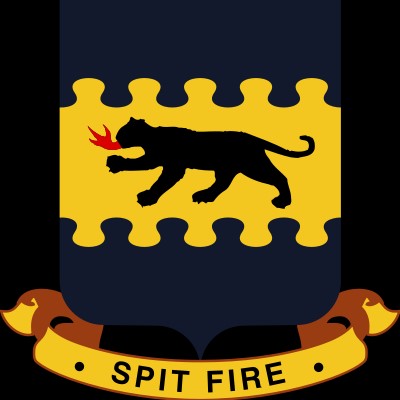North American P-51 Mustang
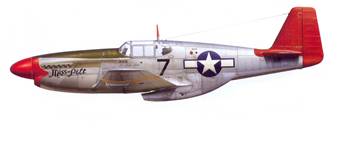
P-51C-10 42-103956 Miss-Pelt of 1st Lt. Clarence "Lucky" Lester, 100th FS, Ramitelli, Italy, September 1944
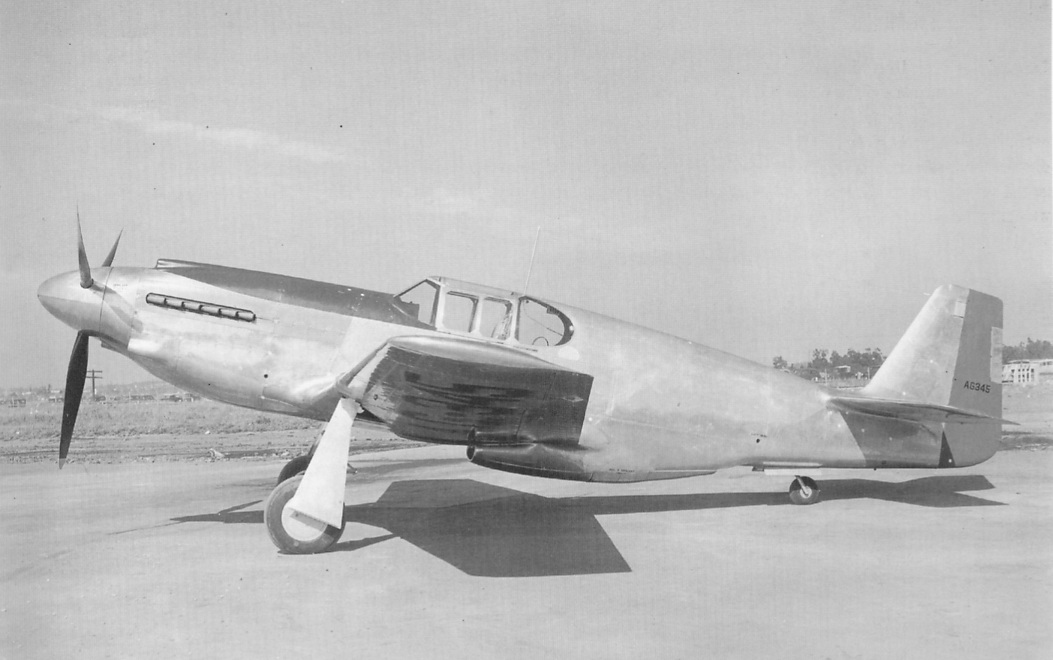
During the year 1940 as the opening stages of World War II were getting underway. The Royal Air Force came to the understanding that the current numbers of aircraft being produced and delivered would not meet their growing needs in the war effort. The North American aircraft company was approached by the British Purchasing Commission to license to build a number of their P-40 Kittyhawks on order from Curtiss Aircraft Corporation. The North American Aircraft corporation's presidents answer to the request was met with an offer to design and build an all new advanced fighter to replace the P-40s. The BPC agreed under one condition that the prototype be available in 120 days. The North American aircraft was developed and designed in an amazing 117 days.
The British were well please with the new design and took
possession of the new prototype designated NA-73X. The RAF as normal
with all aircraft in their inventory named the new experimental the
"Mustang". The Mustang Mk I went into service with RAF as a low
altitude fighter bomber. The new prototype maintained the same
engine as the P-40 Kittyhawk would use throughout its early service
life. The American's followed suit with the British in ordering this
aircraft design in the same version designed the A-36 Apache fighter
bomber. The aircraft was used to a certain degree of success in the
North African campaign. The American's also ordered the newly
designated P-51 with four 20mm cannons, unfortunately the Allison
V-1710-81 engine could not develop the horse power necessary to give
this aircraft success with such firepower. The design soldiered on
from 1942 to 1944 with the Allison power plant. There
 was
a stroke of merged ingenuity. An RAF aircraft test squadron
commanding officer decided to mate the American airframe with the
high performance of the legendary Rolls-Royce Merlin aircraft
engine, as they say the rest was history.
was
a stroke of merged ingenuity. An RAF aircraft test squadron
commanding officer decided to mate the American airframe with the
high performance of the legendary Rolls-Royce Merlin aircraft
engine, as they say the rest was history.
The turbo supercharged Merlin engine gave the Mustang incredible high altitude performance and speed. From this matting the British produced the Mustang II and the Americans the P-51B/C. The difference between the P-51B and P-51C is that the "Bs" were produced in the Dallas, Texas manufacturing facility and the "Cs" were produced in Long Beach, California, other than that the aircraft were mainly identical.
The USAAF used this aircraft to its maximum potential seeing that
the daytime bom bing
campaign needed a long range escort fighter with a high degree of
performance. The P-51 Mustang would more than fit the bill for this
call. In mid to late 1944 in the skies over Europe a continuous
battle for air supremacy was taking place. Although the Luftwaffe
took possession of combat aircraft such as the ME-109K-4 and
FW-190D-9 with similar performance to the Mustangs. The day and
night bombing campaigns was already taking its toll on the
Luftwaffe. Espec
bing
campaign needed a long range escort fighter with a high degree of
performance. The P-51 Mustang would more than fit the bill for this
call. In mid to late 1944 in the skies over Europe a continuous
battle for air supremacy was taking place. Although the Luftwaffe
took possession of combat aircraft such as the ME-109K-4 and
FW-190D-9 with similar performance to the Mustangs. The day and
night bombing campaigns was already taking its toll on the
Luftwaffe. Espec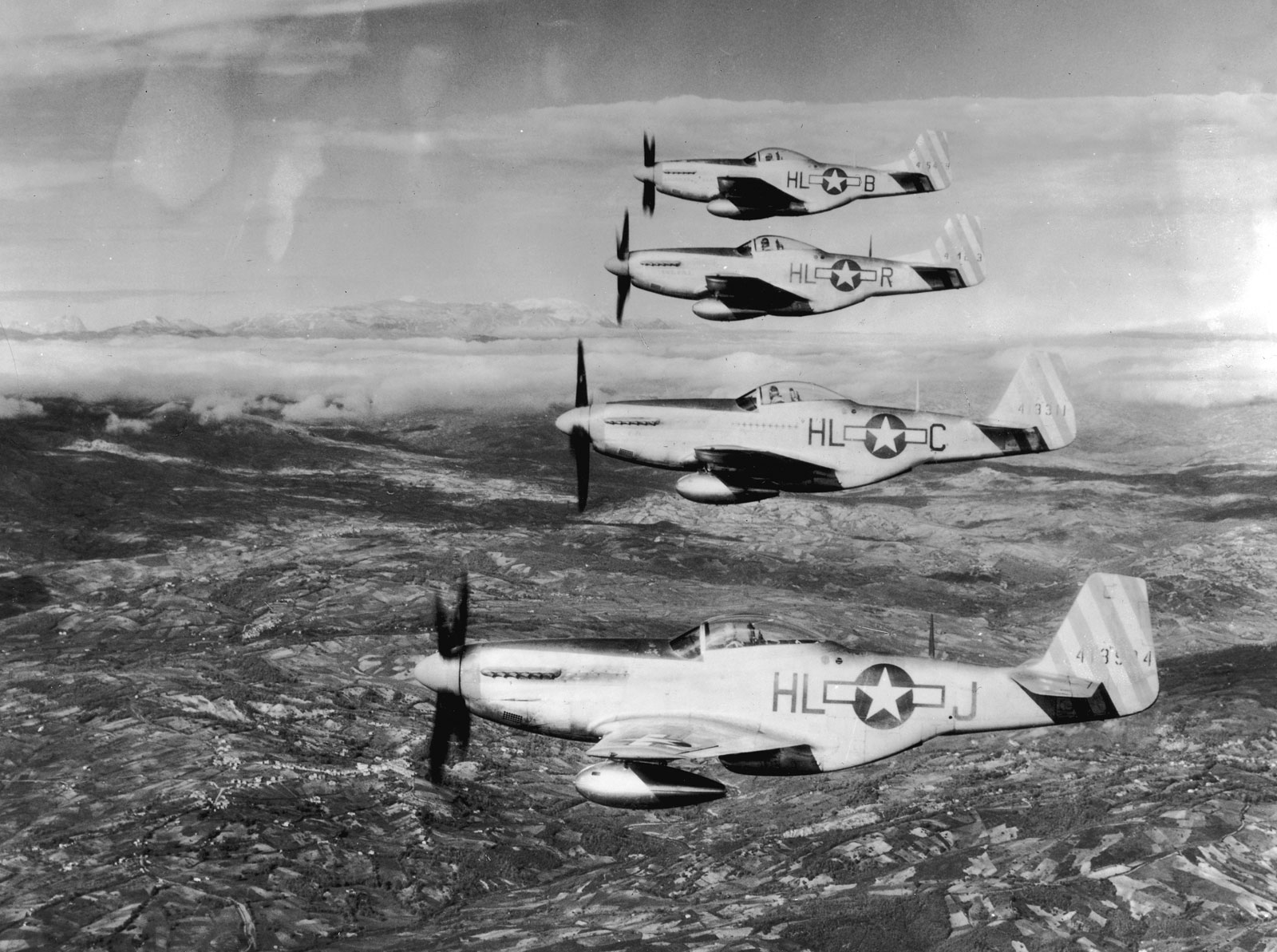 ially
as the Americans were flying ever larger numbers of fighter escorts
with well trained combat pilots sitting at the controls. The
attrition to the ranks of the Luftwaffe pilots attempting to defend
the Third Reich was astronomical. The final version of the Mustang
to see large scale combat in Europe and against the Japanese was the
Mustang Mk III or the P-51D. This aircraft incorporated many changes
that increased its lethality to the enemy. The over all airframe
weight was decreased and the all around visibility was increased
with the addition of the bubble canopy.
ially
as the Americans were flying ever larger numbers of fighter escorts
with well trained combat pilots sitting at the controls. The
attrition to the ranks of the Luftwaffe pilots attempting to defend
the Third Reich was astronomical. The final version of the Mustang
to see large scale combat in Europe and against the Japanese was the
Mustang Mk III or the P-51D. This aircraft incorporated many changes
that increased its lethality to the enemy. The over all airframe
weight was decreased and the all around visibility was increased
with the addition of the bubble canopy.
The Mustang II/P-51B/Cs armament was a compliment of four 50 caliber M2 browning machine guns. The weight savings from the new design allowed for the addition of two more 50 caliber MGs.
In addition to the increase in visibility and firepower the P-51s were fitted with an additional 75 gallon fuel tank behind the pilot seat. This gave the Mustang, along with external fuel load, a maximum range of 1600 miles. The Mustangs could now reach Berlin from airfields in England and Italy. The days of the Third Reich were now numbered. The Allied bombing campaign kicked into high gear with a thoroughbred fighter that could reach into the heart of Germany and deliver a knockout blow to the enemy. Pound for pound the Mustang has been credited with being the best fighter aircraft of the war by its pilots and its enemies. The 117 day marvel turned out to be a war winner for the allies and a crushing defeat for the Nazi war machine.
The 332nd Fighter Group goes to war
in th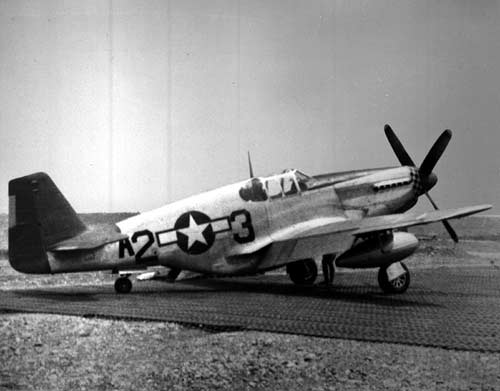 e
Mustang!
e
Mustang!
By July of 1944 many transitions had come upon the 332nd FG. They had finally formed into a full four squadron fighter group with the inclusion of the 99th FS. They had established a home with the Fifteenth Air Force. They had completed their first series of fighter escort missions. They had also transitioned out of the P-39 Airacobra into the move powerful and robust P-47 Thunderbolt and moved from Capodichino, Italy to Ramitelli AAF. It can be said that the strong group leadership and shear will to succeed helped the group to maintain its focus during these times.
Colonel Davis now
possessed the authority, the men, the mission, and now the
instruments in which the Tuskegee Airmen would fly into military
aviation history. In July of 1944 the 332nd FG began to
receive the P-51B/C Mustang for operational use. These fighters were
again hand me downs from the 325th Fighter Group. But,
the ability of the fighter to perform its assigned mission was
great. The 332nd gained valuable experience during escort missions
in preparation for "Operation Dragoon" the invasion of Southern
France. The group was tasked with
 destroying
ground radar stations that would alert the Germans to inbound bomber
and ground attack aircraft prior to reaching their targets. Although
the 332nd suffered some loses. They completely achieved their
mission. The P-51s would be their mounts for the remainder of the
war.
destroying
ground radar stations that would alert the Germans to inbound bomber
and ground attack aircraft prior to reaching their targets. Although
the 332nd suffered some loses. They completely achieved their
mission. The P-51s would be their mounts for the remainder of the
war.
It served
them well as one of the best fighters ever flown. The 332nd
FG began to develop a reputation with its escorted bomber groups.
They knew that if they were escorted by the Red-Tailed Mustangs they
stood a greater chance of returning home from their missions. Very
soon the 332nd FG was placed on many mission boards "By
Request".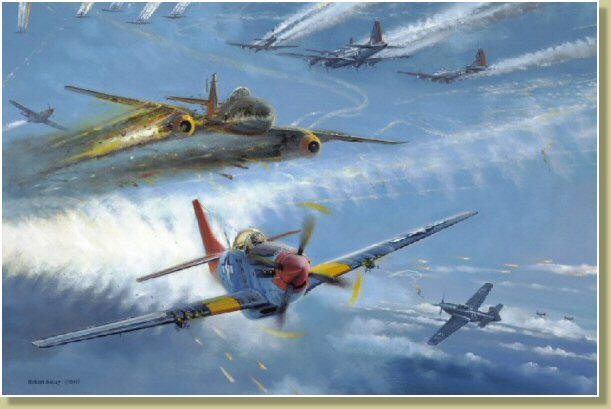
This would be the
last major German offensive action of the war. The Eighth and
Fifteenth Air Force bomber groups began to apply pressure to the
German capital, Berlin. Herman Goering is quoted as saying, when he
looked above in the skies over Berlin and saw the Mustang's, he knew
that the war was lost. In that group of Mustangs were the Tuskegee
Airmen of the 332nd FG. On 24 March 1945 the 332nd
FG was credited with flying the longest bomber escort mission of the
war. From their base in Ramitelli Italy, the 332nd flew a
"Maximum Effort" bomber escort mission. They rendezvoused with the
assigned bomber group to escort them to the appropriate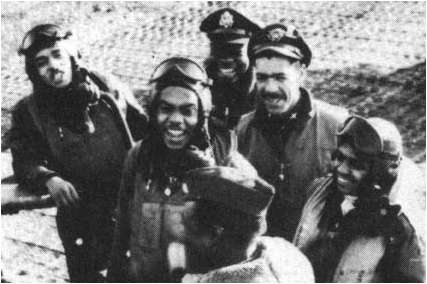 release point. As they arrived the fighter escort into the target
area was nowhere to be found. The decision by command was made to
continue on and complete the full escort mission. Pilots of the 332nd
FG stayed aloft for more than eight hours during the long range
escort mission to Berlin. During this mission the group was credited
with shooting down some of the first jet fighters of the war as well
as not loosing any bombers to enemy aircraft. Whether myth or fact
that the 332nd never lost a bomber to enemy aircraft.
Certainly, no other fighter group can come close to this claim. This
is due to the philosophy of one man, Colonel Benjamin O. Davis, Jr.
He stated to his pilots that under no circumstances were they to
leave those bombers. That stragglers were to be escorted to a safe
base of departure. That the group would not leave the bombers after
their drops to find targets of opportunity. Effective fighter escort
was the mission of the 332nd Fighter Group. Many a
Fifteenth Air Force bomber crew owed their lives to this philosophy
and The Tuskegee Airmen of the 332nd Fighter Group.
release point. As they arrived the fighter escort into the target
area was nowhere to be found. The decision by command was made to
continue on and complete the full escort mission. Pilots of the 332nd
FG stayed aloft for more than eight hours during the long range
escort mission to Berlin. During this mission the group was credited
with shooting down some of the first jet fighters of the war as well
as not loosing any bombers to enemy aircraft. Whether myth or fact
that the 332nd never lost a bomber to enemy aircraft.
Certainly, no other fighter group can come close to this claim. This
is due to the philosophy of one man, Colonel Benjamin O. Davis, Jr.
He stated to his pilots that under no circumstances were they to
leave those bombers. That stragglers were to be escorted to a safe
base of departure. That the group would not leave the bombers after
their drops to find targets of opportunity. Effective fighter escort
was the mission of the 332nd Fighter Group. Many a
Fifteenth Air Force bomber crew owed their lives to this philosophy
and The Tuskegee Airmen of the 332nd Fighter Group.
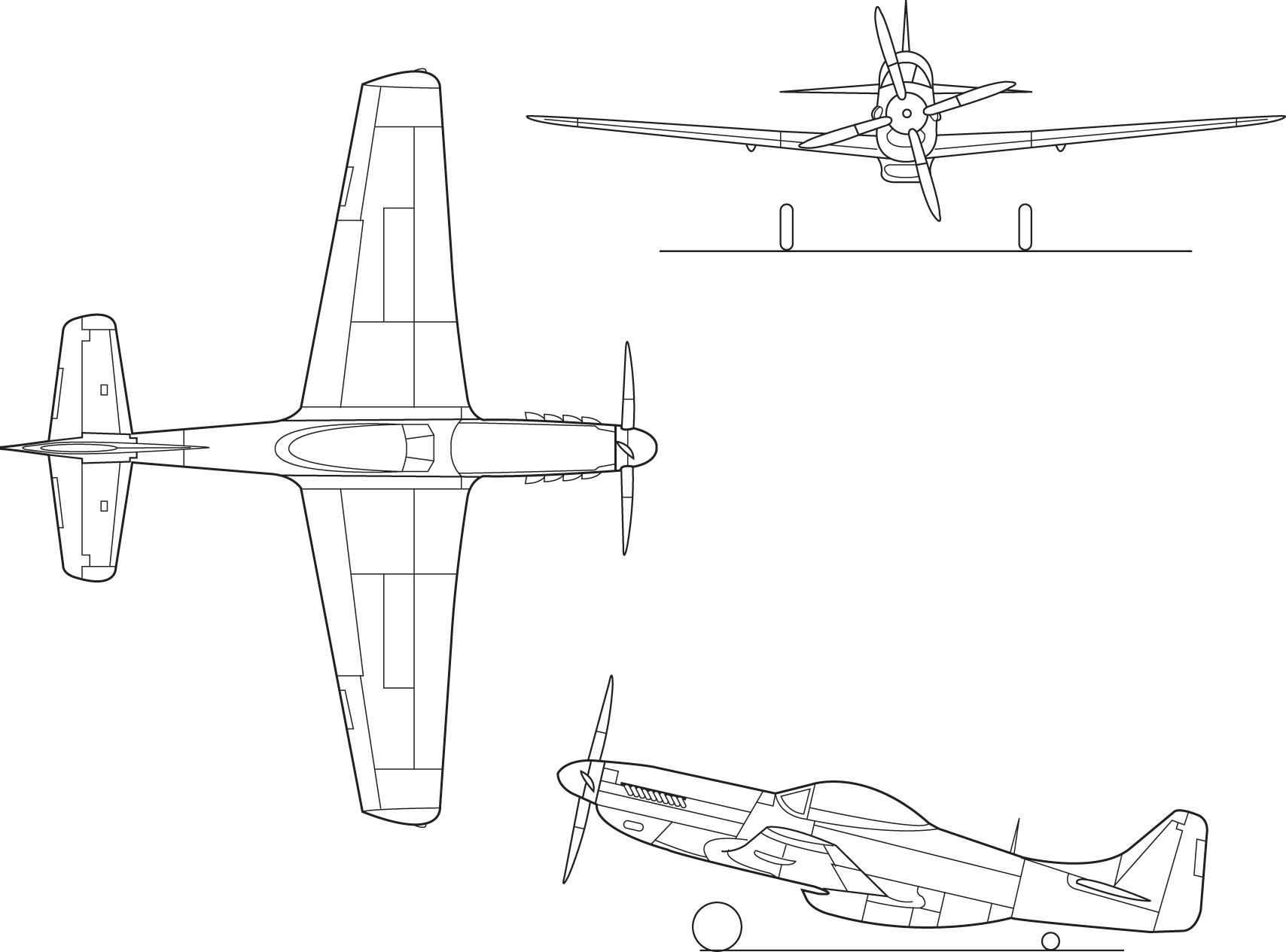
North American P-51D Specifications
| Power Plant: | Packard Rolls-Royce Merlin V-1650-7 12 Cylinder Liquid Cooled |
| Horsepower: | 1490 HP |
| Maximum Speed: | 437 mph @ 25,000 ft. |
| Rate of Climb: | 2800 fpm. 7.3 seconds to 20,0000 ft. |
| Maximum Range: | 1155 miles - with drop tanks 2055 miles |
| Service Ceiling: | 41,900 ft. |
| A/C Weight: | 7635 lbs. Empty Weight, 10100 lbs. Normal Takeoff Weight, 12100 lbs. Gross Takeoff Weight |
| Wing Span: | 37 ft. 2 in. |
| Height: | 13 ft. 7 in. |
| Length: | 32 ft. 5 in. |
| Wing Area: | 233 Sq. Ft. |
| Armament: | (6) Browning M2 50 Caliber MGs, (2) 1,000 lb. Bombs, (10) 5" HVARs |
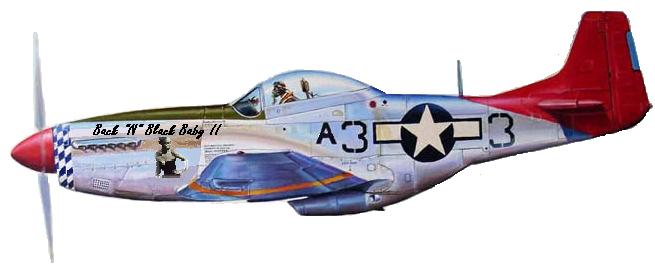 |
|

